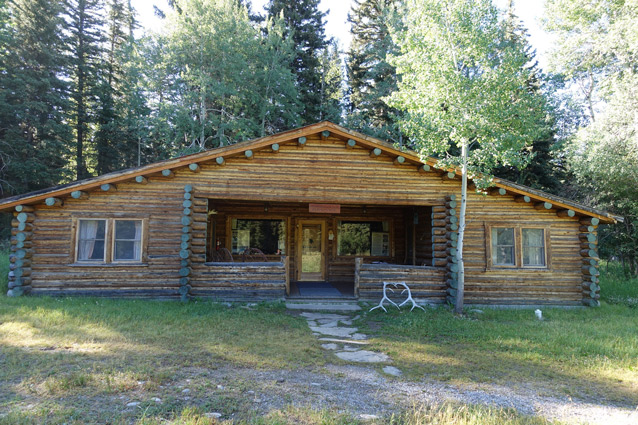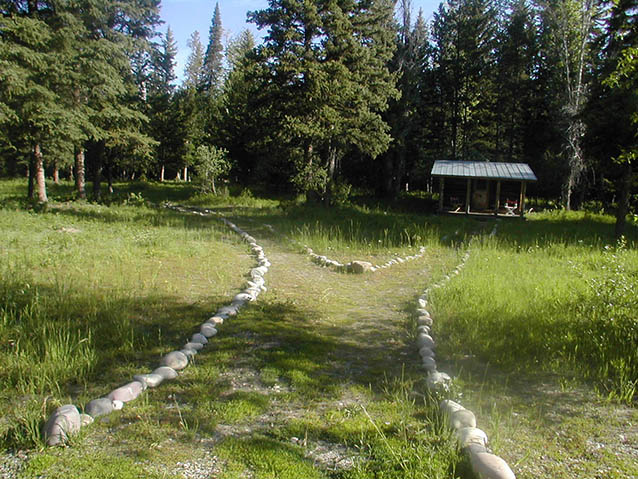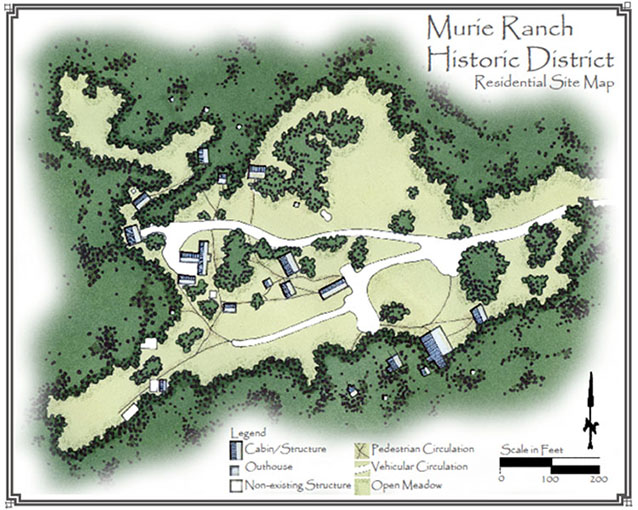The Murie Ranch Historic District is located in Grand Teton National Park. The district includes over 73 acres along the west side of the Snake River, at the base of the Teton Mountain range. Its significance is owed to the Murie family, leaders in the conservation movement who resided on the ranch from 1945 until 2003.
At the Murie Ranch property, Olaus, Mardy, and Adolph developed theories and positions, hosted luminaries in the conservation movement, and wrote numerous scientific publications. The setting at the foot of the Tetons was inspirational to their work.

NPS/S. Sawyer
Naturalists Olaus Murie and his wife Mardy were seminal figures in preservation activities of the Wilderness Society and the passage of the Wilderness Act in 1964. The property served not only as the setting for the writing of the Wilderness Act, but also as a place where the great minds in conservation science could converge in the seclusion of the great wilderness at the base of the Tetons. The 1953 annual meeting of the Wilderness Society, held at the Murie Ranch, is among the most notable of these academic convergences, though many other noteworthy figures visited the ranch during the Murie's residency there.
Although the ranch certainly has a colorful history as a dude ranch that pre-dates the arrival of the Muries, the district’s period of significance begins in 1945 when the Muries acquired the property. This period of history continues to 1980, when the Alaska National Interest Lands Conservation Act, championed by Mardy Murie, was passed and signed into law. The property is a testament to the Muries’ passion for conservation and their conviction in the necessity of a harmonious coexistence between man and nature.

NPS/J. Cowley
An unpaved driveway just southwest of the Grand Teton National Park headquarters leads to the informal parking area in front of the cabin that now serves as the headquarters of the Murie Center. The constructed features of the property include fourteen cabins, which served as homes for the families residing on the ranch and as lodging to accommodate guests during the property’s early dude ranch period. Located in proximity to the cabins are two of the eight original outhouses, along with four recently built non-functional replicas. Other service features remain in the landscape, including a garage, engine room, and electric utility pole. A bathhouse constructed in 2003.
The cultural elements of the wooded periphery around the historic district include informal trails used by the Muries. A trail to the Snake River located behind the Frame Cabin provided access to the Muries’ swimming holes. A closed loop trail, which the Muries dubbed the Around the World Trail, traverses forested landscape to the west of the historic district, passing the beaver ponds and the former location of a “lookout” tree. The Muries were adamant that the trails not impair the natural integrity of the site.

Utah State University, in NPS Cultural Landscape Inventory report
Murie Ranch Historic District was recorded in the National Register of Historic Places as nationally significant for its association with the 20th century American conservation movement. It is also significant for its association with noted conservationists Olaus J. Murie, his wife Margaret E. “Mardy” Murie, and his brother Adolph Murie.
Within the 70-plus acre confines of the Murie Ranch property, Olaus, Mardy, and Adolph developed theories and positions, hosted luminaries in the conservation movement, and wrote numerous scientific publications. The setting, amidst forest and meadow along the Snake River and at the foot of the majestic Teton Range, was inspirational to their work. The dialogues held in the cluster of small rustic cabins and in the larger surrounding landscape continue to inspire and inform ongoing discussions of land and environmental ethics.
Quick Facts
- Cultural Landscape Type: Historic Site
- National Register Significance Level: National
- National Register Significance Criteria: A, B
- National Historic Landmark
- Period of Significance: 1945-1980
Landscape Links
Last updated: December 31, 2019
